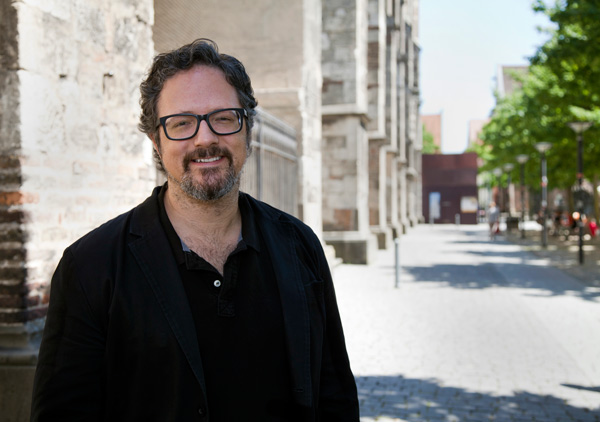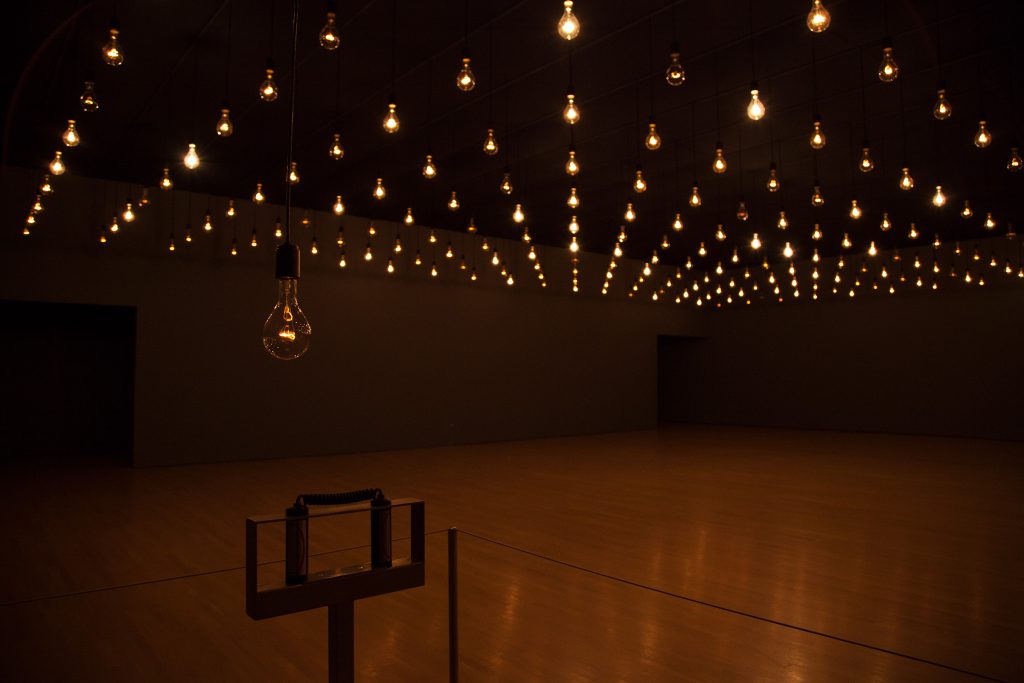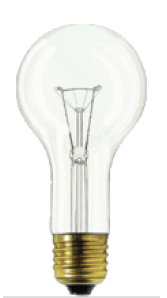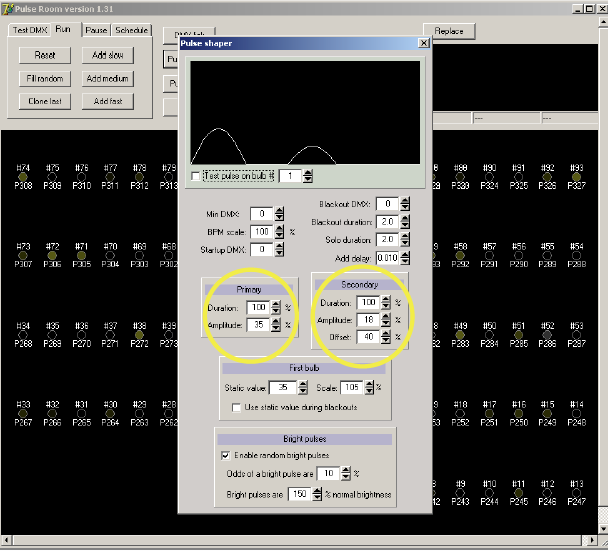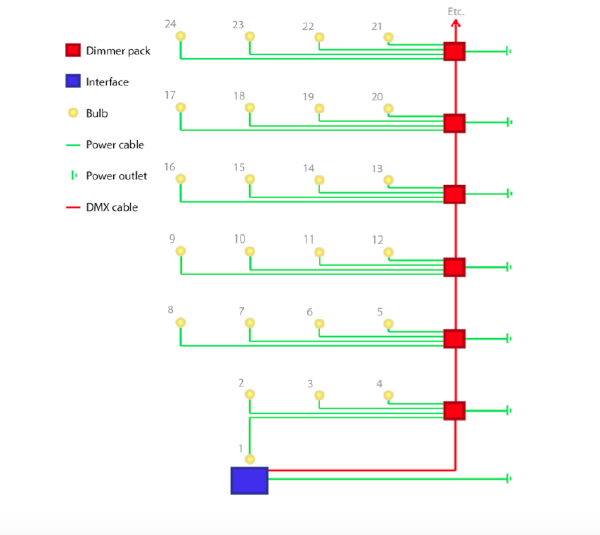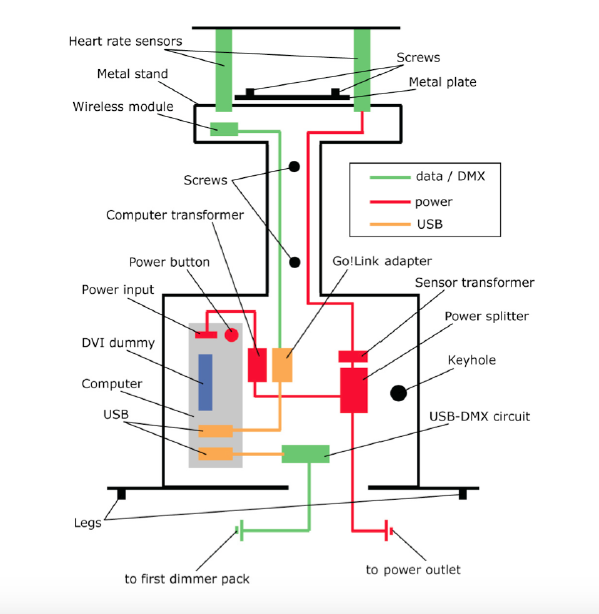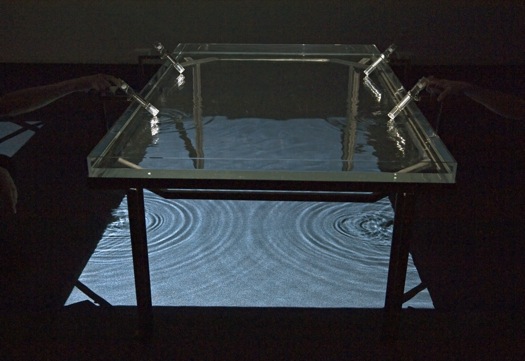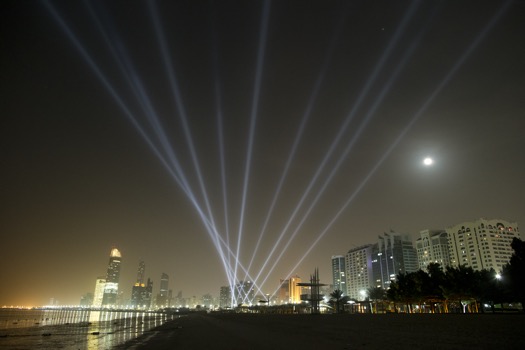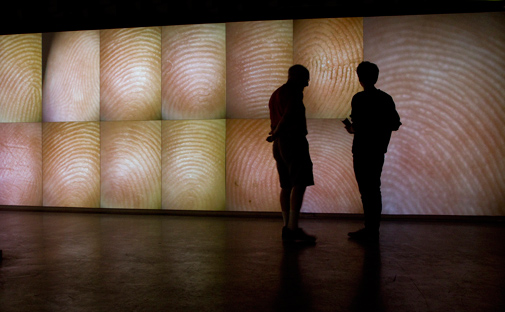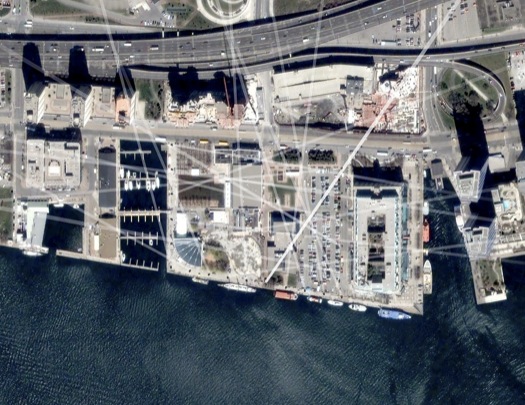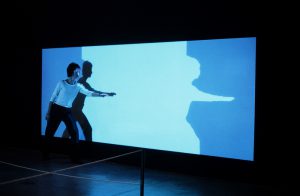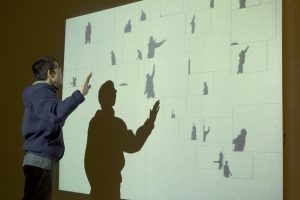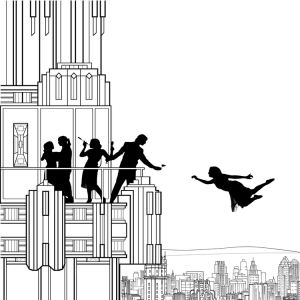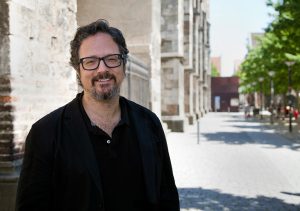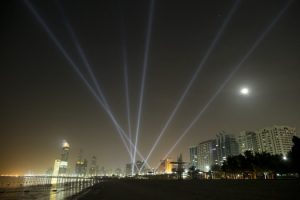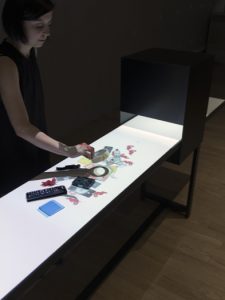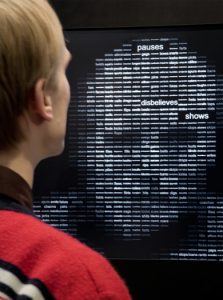Design Movement Written Report – Post-modernism and Deconstructivism
In this essay report, I will be summarizing the design movement of post-modernism and Deconstructivism. I will be covering the origins, characteristics, social influences, relevant art movements and some key works of Post-modernism and Deconstructivism.
Post-modernism movement started off as a reaction against the blandness, cleanliness, functionalism, utopianism, and hostility of modernism. Modernism first started in the 1920s after World War 1, where modernists see traditions as a form of hindering progress. Therefore, they rejected historical style and strive to be more industrialized and beyond simply historical realism (Clahassey, P, 1986). The modernist believed in the rejection of the decorative motif and heavily relied on simplified style. They embraced functionalism and emphasized on the pure material used (Holt, D., 1995). However, such style declined later due to its unrealistic ambitions of overly soulless structure created despite out of its good intention of simplicity and functionality (H, 2011).
As a result, it led to the rise of Post-modernism where it rejects the industrial process, defies definitions, shattered controversial notion about style, bringing about liberation to design. Post-modernism, a movement that represented the imperfect nature of societies and focuses on the complexity and contradictions of human experience. Post-modernism usually uses funny, confrontational, rhetorical or mocking manners to stimulate and bring about self-awareness regarding design itself (Museum, A., & Digital Media, 2013).
One example of Post-modernism would be the Vanna Venturi House by Robert Venturi. Designed for his elderly mother Vanna at Philadelphia, USA in 1964 (Fig.1). Venturi challenged modernist movement issue of simplified solutions by breaking the rules. He introduced a functionless arch on the exterior and has a stairway that leads to nowhere on the interior (Vanna Venturi House, 2018).

Another Post-modernism manifestation, Memphis design, was originated in 1981 at Italy. Designer Ettore Sottsass founded Memphis group with other designers to counter modernism. Memphis group aims to make design radical, funny, outrageous and disregard the definition of good taste. Therefore, their style was inspired by the bright colors used in pop art and geometric forms used in art deco (Sari, T., 2018). For example, Ettore Sottsass’s Carlton ambiguous furniture can be seen as shelve, room divider, dresser or all three (Fig.2). It uses brightly colored and disorderly placed partitions as support. Yet, another design movement that led to the popularizing of anti-design reaction (M., n.d.).

Deconstructivism another architectural style of Post-modernism originates from 1988. It encourages freedom of form and complexity in a building rather than strict attention to functional concerns and conventional design elements such as right angles or grids. The term Deconstructivism first appeared as an idea developed by French philosopher Jacques Derrida in the late 1960s. He was an Algerian-born French philosopher that lectured philosophy throughout the world and was best known for developing the theory of Deconstructivism (Britannica, T. E., 2018).
In Derrida’s theory, it criticizes literary, preconceived beliefs about reasons and logic. He believes that text should have multiple interpretations and, therefore, could never exactly mean what it says. He argues that language is non-referential because it refers neither to things in the world nor to our concepts of things. Word is just a signifier, it is meaningless, and it is a physical existence by itself that we input meaning into. Derrida also believes that language is unstable, plural, fluidity, and have a never-ending stream of meanings. Meaning of words and symbols only exist because of the relationships they have with each other. Therefore, he seeks the truth within. Similarly, to the idea of semiotics, the study of non-verbal communication, and how we derive meaning from symbols and word has no connection to its signified concept. Deconstructivist starts to think that since everything does not have a fixed meaning, things should be open to interpretations. After which, the theory was further developed and translated into an architectural style. Deconstructivist decided to break all the rules and make building bend, juxtapose and challenges the ideas of rational order in the architectural building (T.,n.d.).
Deconstructivism first came to public attention in the 1980’s during the Parc de la Villette competition as a result of the winning design by Bernard Tschumi, Derrida, and Peter Eisenman. The style moved away from the past movement ideology of “forms follow function”, “purity of form” and “truth to materials” whereby buildings are designed to be fragmented, with the exploration of asymmetrical geometry that is inspired by Constructivism (Dima. S., 2018).
Deconstructivism took references from Constructivism, a movement where Russian Constructivists believed that art and design should be absorbed into industrial production. Constructivism uses geometric, precise, mathematical method in their work and shows how visual elements such as line, color, and shape possess their own expressive qualities. Such geometric shapes and fragmentations were later applied during the Deconstructivism period (Fer, B.,1989).
Deconstructivism architecture is characterized by a few features that defined its style. Firstly, the shearing of fragmentations, Deconstructivism architectural form tends to blow into loose collections of related fragments. Secondly, it mainly uses non-rectilinear shapes, which distort and dislocate architectural conventional structure. This destroys the dominance of the right angle and the cube by using the diagonal line that cuts through space. Thirdly, the manipulation of the surface, Deconstructivism uses multilayering of planes to suggest multiple interpretations. Lastly, it rejects the idea of perfect form and ornamentation. In summary, Deconstructivism aims to provokes shock, uncertainty, disruption, distortion by challenging and putting juxtaposed elements together to contradict each other in order to challenge traditional ideas of harmony, continuity, and stability in building design (McLeod, M., 1989).
One example to illustrate Deconstructivism style would be the 140,000 square foot building, Museum of Pop Culture, Seattle, designed by Frank Owen Gehry in the year of 2000 (Fig.3). The building is made up of 3000 panels with 21000 individually cut stainless steel and painted aluminum that encased the building. The outer finishing color appearance would change accordingly to different lighting condition or angle viewed. The structure and colors signify the energy and fluidity of music (MoPOP., (n.d.)). Another of Frank Gehry’s example would be the Dancing House, Prague, Czech Republic designed in 1996 (Fig.4). The building resembled a dancing couple, the “dancing lady” shape is supported by 99 concrete panels with different shapes and dimension, coupled with a large twisted metal structure on top of the building (D. (n.d.)). In general Frank Gehry’s style is flowier in motions, making use of curvilinear and deformed geometric forms he aims to express emotions and create a sense of motion with his works (Frank. G & Deconstructivist Architecture, (n.d.)).


Another key Deconstructivism architect would be Zaha Hadid who designed Vitra Fire Station at Weil am Rhein, Germany in the year 1993 (Fig.5). It made uses of sharp, angular, linear and layering a series of such concrete planes to represent a frozen moment of movement. Giving a sense of alertness and ready for action at any time (Zaha Hadid Architects. (n.d.)). Her works usually uses her abstract painting with the influence of avant-garde Russian painters’ style as a platform to inspire her design (Tribe, Y., & S., 2018).

In conclusion, every design movement is a rejection and an improvement of the preceding movement. At a different period, different social, political, philosophical phenomenon shapes and cultivates the way we think, act and react in relation to the people and world around us. Every movement is trying to prove a point and make a statement. However, at the end like the ideology behind Deconstructivism, there is no right answer to which movement is the best as anything can be everything.
Bibliography
Britannica, T. E. (2018, October 11). Jacques Derrida. Retrieved from https://www.britannica.com/biography/Jacques-Derrida
Clahassey, P. (1986). Modernism, Post Modernism, and Art Education. Art Education, 39(2), 44-48. doi:10.2307/3193006
D. (n.d.). History. Retrieved November 10, 2018, from https://www.dancinghousehotel.com/en/the-hotel/
Dima. S. (2018, August 12). What is Deconstructivism? Retrieved November 10, 2018, from https://www.archdaily.com/899645/what-is-deconstructivism
Frank Gehry & Deconstructivist Architecture. (n.d.). Retrieved November 8, 2018, from https://study.com/academy/lesson/frank-gehry-deconstructivist-architecture.html
Fer, B. (1989). Metaphor and Modernity: Russian Constructivism. Oxford Art Journal, 12(1), 14-30. Retrieved from http://www.jstor.org.ezlibproxy1.ntu.edu.sg/stable/1360263
H. (2011). The Rise and Fall of Modernist Architecture. Retrieved November 8, 2018, from http://www.inquiriesjournal.com/articles/1687/the-rise-and-fall-of-modernist-architecture
Holt, D. (1995). Postmodernism- Anomaly in Art-Critical Theory. Journal of Aesthetic Education, 29(1), 85-93. doi-10.2307/3333520
Kuiper, K. (2018, January 02). Modernism. Retrieved November 10, 2018, from https://www.britannica.com/art/Modernism-art
M. (n.d.). Carlton. Retrieved November 10, 2018, from https://www.memphis-milano.com/collections/furniture/products/carlton
McLeod, M. (1989). Architecture and Politics in the Reagan Era- From Postmodernism to Deconstructivism. Assemblage, (8), 23-59. doi-10.2307/3171013
Museum, A., & Digital Media. (2013, January 31). Victoria and Albert Museum. Retrieved from http://www.vam.ac.uk/content/articles/p/postmodernism/
Muscato, C. (n.d.). Deconstructivism in Architecture: Characteristics. Retrieved November 10, 2018, from https://study.com/academy/lesson/deconstructivism-in-architecture-characteristics.html
Museum of Pop Culture – MoPOP. (n.d.). Retrieved from https://www.seattleattractions.com/seattle-attractions/emp-museum/
Post Modernism Art: Definition, Theory & Characteristics. (n.d.). Retrieved November 8, 2018, from https://study.com/academy/lesson/post-modernism-art-definition-theory-characteristics.html
Sari, T., S., & Tribe, Y. (2018, April 26). How the Memphis Movement Went Against “Good Taste” to Inspire Designers Today. Retrieved from https://mymodernmet.com/what-is-memphis-design/
T. (n.d.). Https://www.tuirennhurstfield.com/deconstruction-semiotics-theatre/. Retrieved November 8, 2018, from https://www.tuirennhurstfield.com/deconstruction-semiotics-theatre/
Tribe, Y., & S. (2018, February 27). Zaha Hadid’s Legacy and Her Top 10 Architectural Masterpieces. Retrieved from https://mymodernmet.com/zaha-hadid-architecture/
Vanna Venturi House. (2018, July 09). Retrieved from https://interactive.wttw.com/tenbuildings/vanna-venturi-house
Zaha Hadid Architects. (n.d.). Retrieved November 8, 2018, from http://www.zaha-hadid.com/architecture/vitra-fire-station-2/











